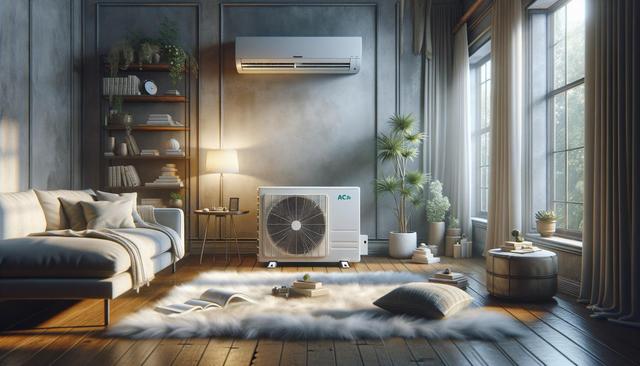Understanding How Ductless AC Works
Ductless air conditioning, often referred to as a mini-split system, is a modern solution for efficient and targeted cooling. Unlike traditional systems that require extensive ductwork, ductless AC units consist of two main components: an outdoor compressor and one or more indoor air-handling units. These components are connected by a small conduit that houses the power cable, refrigerant tubing, suction tubing, and condensate drain. This setup makes it easier to install in homes without existing ducts or in new additions where adding ductwork would be costly.
Understanding how ductless AC works helps homeowners make informed decisions about their cooling needs. The system operates by drawing warm air from the interior space, cooling it via the refrigerant cycle in the indoor unit, and then redistributing the cooled air back into the room. This process is highly energy-efficient since there is no loss of conditioned air through ducts, which is common in central systems. The ability to control temperatures independently in different rooms also allows for greater customization and comfort throughout the home.
Advantages of Energy-Efficient Ductless Systems
One of the key attractions of ductless systems is their energy efficiency. Many units meet or exceed ENERGY STAR® guidelines, making them an environmentally friendly option. Energy-efficient ductless systems use advanced inverter technology that adjusts compressor speed to match the cooling demand, resulting in less energy consumption and more consistent indoor temperatures.
Here are some of the notable advantages of going ductless:
- Lower monthly electricity bills due to reduced energy use
- Minimal energy loss compared to ducted systems
- Zone-based cooling for tailored comfort
- Reduced carbon footprint and better indoor air quality
When selecting from the best ductless AC brands, it’s important to look at energy ratings, customer reviews, and warranty coverage. These factors can help identify models that offer long-term value and performance without compromising on efficiency.
Installation Considerations and Costs
For many homeowners, the cost of ductless AC installation is a major consideration. Although the upfront investment can be higher than some traditional systems, the cost is often offset by lower energy bills and minimal maintenance needs. Installation is typically straightforward and less invasive, especially in homes without pre-existing ductwork, which can make a significant difference in overall expenses.
Factors that impact installation costs include:
- Number of indoor units needed
- Size and layout of the space
- Labor rates in your region
- Type and brand of the system
Consulting with a licensed HVAC professional can provide a clearer estimate and help determine the most appropriate system configuration for your home. Investing in a quality installation ensures optimal performance and longevity of the unit.
Maintenance Tips for Long-Term Performance
Maintaining your ductless system is essential to keep it running efficiently and to extend its lifespan. Ductless AC maintenance tips include regular cleaning and timely inspections. Unlike central systems that often require professional servicing for duct cleaning, ductless units are easier to manage on your own.
Key maintenance tasks include:
- Cleaning or replacing filters every month or as recommended
- Wiping down indoor unit vents and checking for dust buildup
- Inspecting the outdoor compressor for debris or blockages
- Scheduling annual professional tune-ups
Following these steps can prevent common issues and reduce the likelihood of unexpected breakdowns. Homeowners who follow routine care often enjoy more reliable operation and lower repair costs over time.
Troubleshooting Common Ductless AC Issues
Even with regular maintenance, ductless systems can sometimes experience problems. Knowing how to recognize and address these issues can help prevent larger complications. Troubleshooting ductless AC issues begins with identifying symptoms such as unusual noises, poor airflow, or inconsistent cooling.
Some typical problems and their possible causes include:
- Unit not turning on: Could be a power supply issue or malfunctioning remote
- Water leakage: Often caused by a blocked or disconnected drain line
- Reduced cooling: May indicate a dirty filter or low refrigerant levels
- Unusual sounds: Loose components or debris in the fan
If basic troubleshooting doesn’t resolve the issue, contacting a certified technician is recommended. Prompt attention to minor problems can prevent more serious damage and ensure your system remains efficient and effective.
Conclusion: Is a Ductless AC Upgrade Right for You?
For homeowners seeking a reliable and flexible cooling solution, ductless AC systems offer a compelling option. With benefits such as energy-efficient ductless systems, straightforward installation, and minimal maintenance, they serve as a practical upgrade for both existing homes and new additions. Understanding how ductless AC works, the cost of ductless AC installation, and how to maintain and troubleshoot these systems can help you make a well-informed decision. Whether you’re researching the best ductless AC brands or simply looking to improve comfort in a specific room, ductless systems provide a modern, efficient alternative to traditional cooling methods.




Leave a Reply